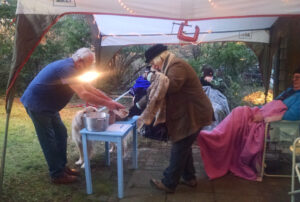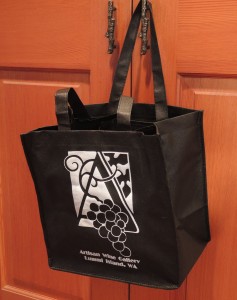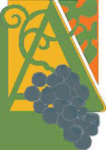lummi island wine tasting feb 19 ’21
click on photos for larger images
Bread This Week
 Polenta Levain – The sourdough starter is fed and built up over several days, then mixed with bread flour and polenta in the final dough mix. This is not the sweet corn cranberry bread that I have done in the past that is enriched with milk and butter, this bread is a nice rustic loaf with great corn flavor. – $5/loaf
Polenta Levain – The sourdough starter is fed and built up over several days, then mixed with bread flour and polenta in the final dough mix. This is not the sweet corn cranberry bread that I have done in the past that is enriched with milk and butter, this bread is a nice rustic loaf with great corn flavor. – $5/loaf
Multi Grain Levain – This bread uses a flavorful mix of bread flour and fresh milled whole wheat and rye. A nice mixture of flax, sesame sunflower and pumpkin seeds and oatmeal add great flavor. And just a little honey for some sweetness. A great all around bread that is full of flavor – $5/loaf
Chocolate Panettone – Panettone is an italian brioche like sweet bread, almost like cake, generally made during the Christmas holidays as a large loaf, I’ve seen some for sale for close to $70. These chocolate panettone are a smaller version, and less expensive, but are still made with lots of sugar, butter, eggs and honey including 3 different types of chocolate as well as candied ginger & lemon and a chocolate glaze on top – 2/$5
Wine of the Week: Carmim Reguengos Alentejo Tinto ’18

The town of Reguengos is near the eastern edge of Portugal’s Alentejo wine region, about 90 miles east of the Atlantic coast and a dozen miles west of the Spanish border. In this sparsely populated rural areathe principal The Carmim winery is owned by Rui Veladas, who, like many local growers, uses a number of biodynamic practices, including having sheep grazing among the rows of vines.
Carmim Reguengos Alentejo Tinto ’18 Portugal $9
Blend of Touriga Franca, Touriga Nacional, Tinta Roriz, Sousão; Lovely floral black cherry and blackcurrant fruit has evolved from a tricky vintage with harvest interrupted by rain. At the beginning the wine was a bit tannic, but has softened to lovely, fresh, supple, and structured black fruits with notes of pepper, meat, and a lovely herbal twist. A terrific value!
Wine Emergencies…Who Ya Gonna Call?
 While Covid continues to limit our movements and associations, we will continue to help you keep your wine shelves topped up. We know how it is…one minute your wine shelves are reassuringly stocked, and the very next day you reach for something and OMD, where did it all go?? It happens to all of us during these undifferentiated days and weeks of semi-quarantine.
While Covid continues to limit our movements and associations, we will continue to help you keep your wine shelves topped up. We know how it is…one minute your wine shelves are reassuringly stocked, and the very next day you reach for something and OMD, where did it all go?? It happens to all of us during these undifferentiated days and weeks of semi-quarantine.
But fear not, mis amigos! When a wine emergency strikes YOUR wine pantry, just click on the Order Wine link in the header above to browse our list of currently available wines with tasting notes and prices. When you have made your selections you can phone us with your order or email us using the Contact Us link above. We will confirm your order and make arrangements for pickup/delivery at your convenience. EZ-PZ!
ALSO, we are in the process of restocking some favorites and adding some new wines to our list, including several new Portuguese wines. Hope to get the list updated soon!
Bringing Back the Fairness Doctrine
 Established in 1949 by the FCC, the Fairness Doctrine required holders of broadcast licensees in the U.S. to cover both sides of controversial public issues with honesty, equity, and balance. The Doctrine evolved from the Mayflower Doctrine of 1941, in which the FCC ruled that, because the public airwaves were a scarce resource, publicly licensed radio stations could not favor any particular political position or candidate.
Established in 1949 by the FCC, the Fairness Doctrine required holders of broadcast licensees in the U.S. to cover both sides of controversial public issues with honesty, equity, and balance. The Doctrine evolved from the Mayflower Doctrine of 1941, in which the FCC ruled that, because the public airwaves were a scarce resource, publicly licensed radio stations could not favor any particular political position or candidate.
The Fairness Doctrine clarified the Mayflower Doctrine with the requirement that licensees could not use their stations “for private interests, whims, or caprices , but (only) in a manner which will serve the community generally.” The Fairness Doctrine governed the content of public newscasts for nearly forty years until its demise in 1986, when Judges Robert Bork and Antonin Scalia of the District of Columbia Circuit concluded that though the Fairness Doctrine did apply to television, the FCC was not required to apply it. Huh? Say What…?
The next year, in 1987, the same appellate court decided further that since Congress had not mandated the doctrine, the FCC did not have to enforce it, saying in the Syracuse Peace Council decision that “the intrusion by government into the content of programming occasioned by the enforcement of [the Fairness Doctrine] restricts the journalistic freedom of broadcasters … [and] actually inhibits the presentation of controversial issues of public importance to the detriment of the public and the degradation of the editorial prerogative of broadcast journalists.”
A wee bit of contemplation shows clearly how these naive changes to media regulation led directly to the decades-long manipulation of political polarities that has dominated our political landscape for the past thirty years, culminating in the mob assault on the Capitol on January 6 by people who were deliberately misinformed and manipulated into those actions.
In a time when all of us are vulnerable to manipulation from all sides on any issue, it seems very appealing to go back to a “Fairness Doctrine,” where “fair and balanced” means exactly that.
If you enjoyed this post, please consider to leave a comment or subscribe to the feed and get future articles delivered to your feed reader.

 2072 Granger Way
2072 Granger Way